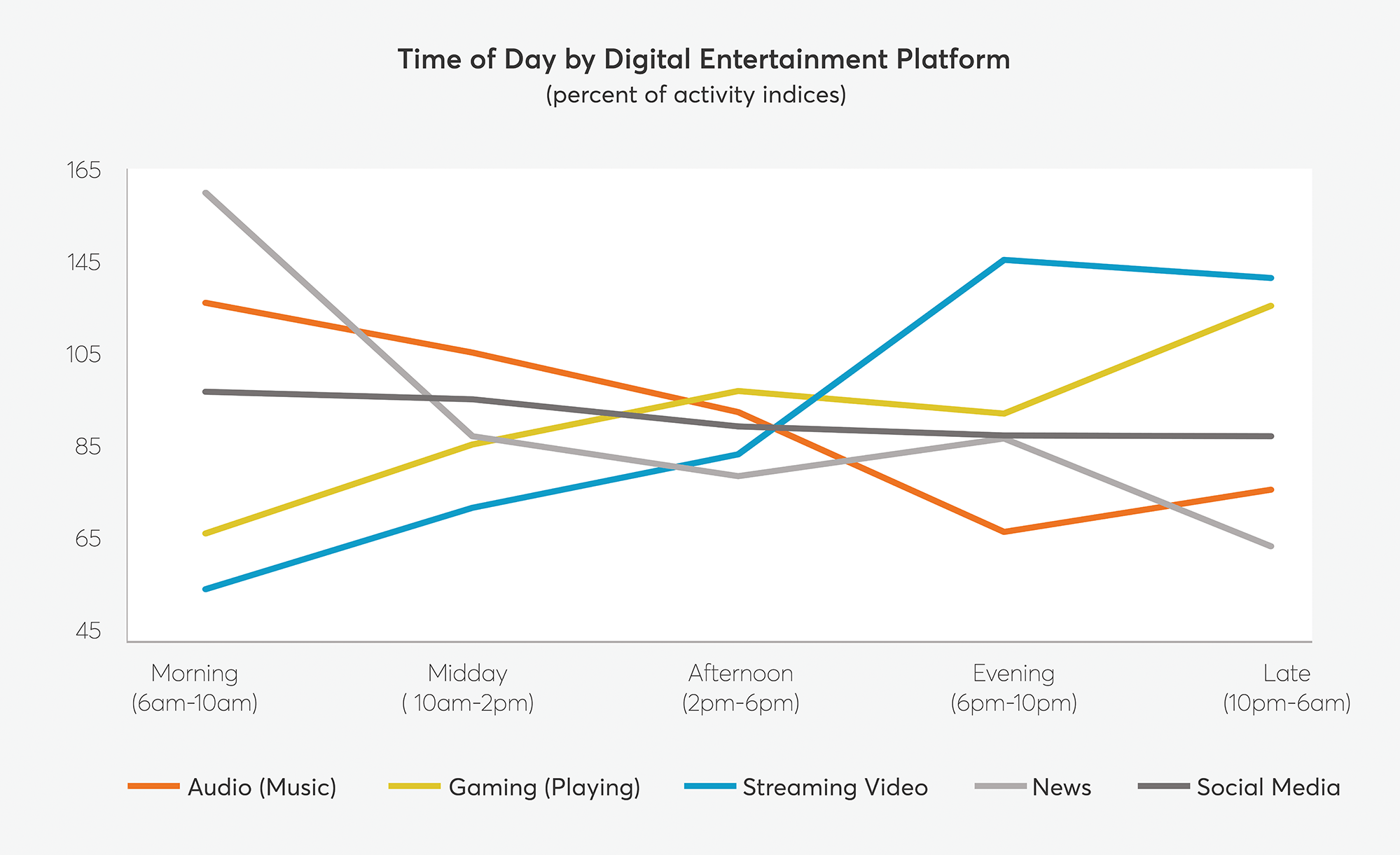With Us

Blog
A Break in the Natural Order of Media
5 minute read
Even as we approach some degree of normalcy after nearly two years of intermittent lockdown due to the COVID-19 pandemic, we’re finding that a lot of our everyday lives remain quite a bit different. Restaurants, shopping, travel, generally everything that requires some degree of social interaction may be impacted by the norms and precautions of the pandemic for years to come. Even our daily routines, such as how we consume media, have not been immune to an ongoing influence from this period.
In the confines of their homes, consumers were free to explore new ways in which these forms of entertainment were enjoyed or layered. As recently noted in AdWeek, total consumption of home media increased significantly, but also diversified in some respects from pre-pandemic trends. Notably, streaming and gaming both found a larger presence in the media diets of consumers. In some cases, this usage overlapped to the point of suggesting a shift in well-documented consumption trends such as “second screening,” where the emerging picture was less one confined to linear programming on the television and social media on the phone, but streaming content on the TV and gaming on the phone.
The ongoing question became, was this increase in streaming and gaming (either alone or in combination) merely a symptom of the pandemic, where consumers were in need of expanded home entertainment options, or was it emblematic of a more enduring shift breaking the natural order of media consumption prior to the lockdown? In the following months, anecdotal takes and limited evidence found corroboration from a variety of sources.
Media research firm comScore reported a notable shift in PC and console gaming before and after lockdown orders, though mobile was largely flat. While the general narrative around gaming and the pandemic was increased engagement, there were some concerns that mobile might drop off as parts of life where mobile gaming is common (like commuting) were no longer regular occurrences. We now see this didn’t have much effect, and as restrictions eased mobile once again emerged at the forefront of gaming growth as comScore reported an increase in mobile gaming minutes between July of 2020 and 2021.
The growth of mobile gaming didn’t face a roadblock by merit of less mobile-friendly opportunities, like so many other aspects of our day to day lives it likely found new occasions to be weaved into everyday life, such as during our evening TV consumption, which is increasingly shifting online. Research firm Forrester predicts that heavy online video consumption via streaming services will continue on past the pandemic, potentially to the point of making visits to the cinema a relatively niche activity.

The prevailing logic surrounding the trajectory of gaming through the pandemic is that this period represents less of a shift in overall trends than a catalyst to already existing ones. The same may be true for streaming viewing, inclusive of layering this viewing with gaming. Human behaviors, as a rule, tend to shift slowly - but what may have been a curiosity or reinvestment at the onset of the pandemic has likely become a habit some two years later. Like so much of our day-to-day lives, the pandemic has irrevocably altered our relationship with media. The prevailing evidence points towards a relationship where gaming is featured even more prominently than before, and in dialogue with shifting expectations around main-stay media consumption such as TV.
Despite being very much still within the COVID-19 pandemic, the picture of what our world will look like on the other side of this period is becoming clearer. What was a novelty at the onset of the pandemic may now be a norm, and whatever trajectory gaming was on en route to being a dominant part of the consumer media ecosystem may have been irrevocably fast-tracked. With the rise of gaming more generally, we will inevitably find new ways in which gaming is weaved into other forms of media consumption, be it via a new form of second screening or otherwise. Marketers would be well advised to understand and adapt to the new media landscape which may well extend beyond the confines of this unusual and challenging period, and in doing so evolve old strategies to emerging media frontiers.
Advertise
With Us
Let's Start By Getting Connected
THE LATEST NEWS & CONTENT
Mobile Gaming: The Common Denominator Among All Game Players
In the increasingly diverse world of gaming, reaching unique, valuable audience segments offers a significant opportunity for brands and advertisers.
Why Multiplatform Players are More Receptive to Advertising
As the gaming industry continues to take its place in the entertainment ecosystem, understanding the different audience segments becomes increasingly critical for brands looking to tap into this lucrative market.
IAB PlayFronts 2024 Recap
The IAB PlayFronts 2024 marked a significant milestone in the digital entertainment sphere, bringing together industry innovators to share insights and chart the future of interactive media for the third year in a row.









